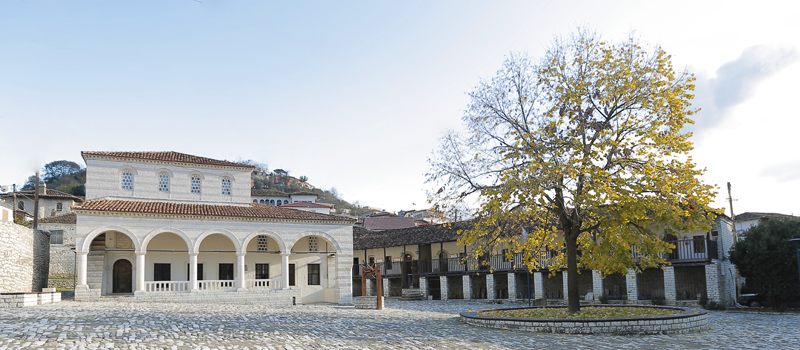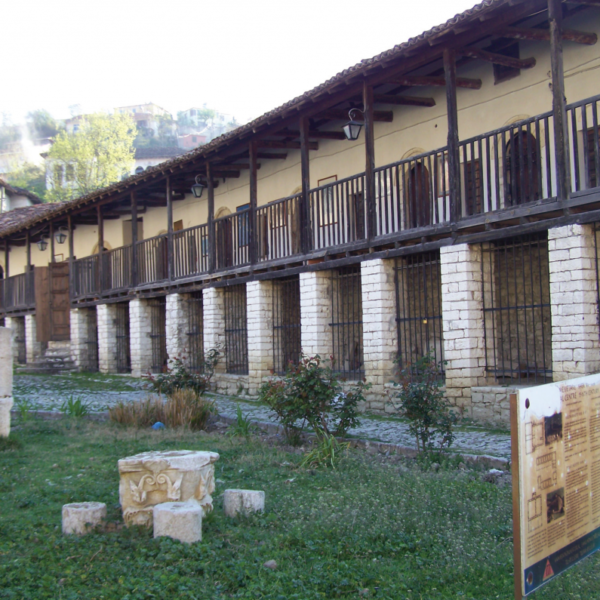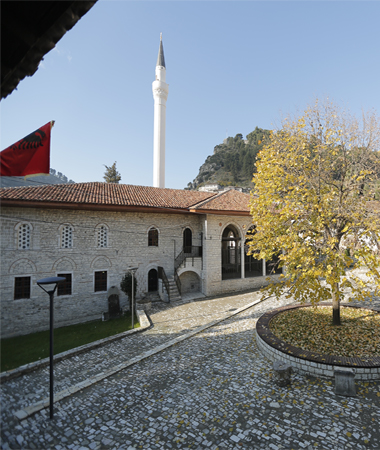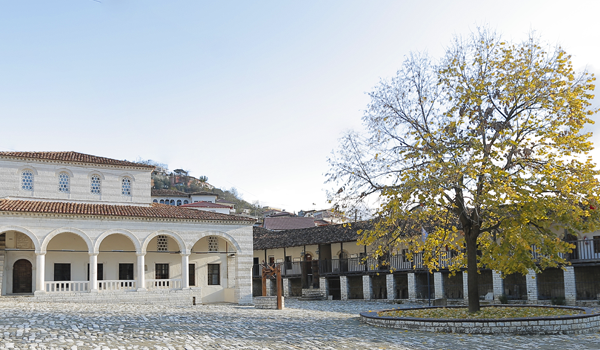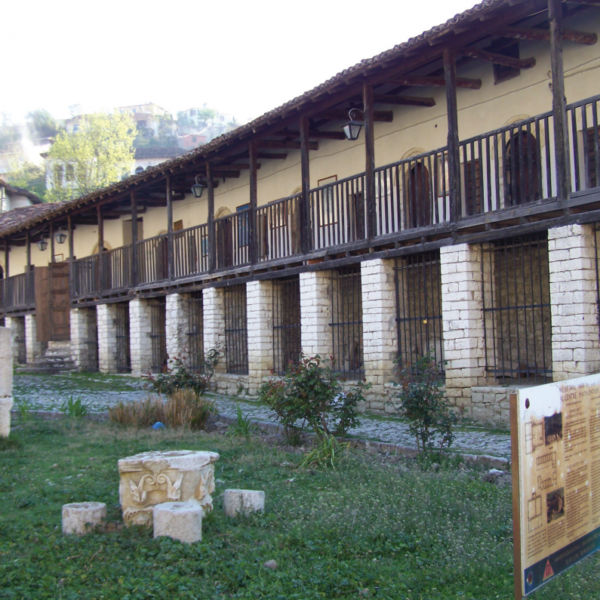**Overview:**
Teqeja e Helvetive, an integral part of the religious and social complex alongside Xhamia Mbret, the dervish lodges, and Teqeja e Sheh Qerimi, stands as a rare monument with unparalleled architectural and artistic values. Constructed in the latter half of the 18th century, it bears witness to a period of significant construction activity during the rule of Ahmet Kurt Pasha in Berat.
**Architecture:**
– **Dedication Inscription:** The dedication inscription, poetically engraved on the western entrance, commemorates the builders and reflects the high construction activity during Ahmet Kurt Pasha’s governance.
– **Semahane (Prayer Hall):** The central element of the composition, the prayer hall, is elevated, adding grandeur to the entire structure.
– **Burial Chamber:** To the south, a burial chamber, and to the west, an interesting portico, enhance the overall architectural appeal.
**Interior Composition:**
– **Semahane:** The prayer hall, possibly part of the first construction phase, is rectangular and features a mezzanine resembling a balcony in the eastern and northern parts. Evliya Çelebi’s visit in the 17th century confirms the early existence of the prayer hall’s extended eastern section.
– **Rich Interior Details:** The prayer hall interior boasts rich wooden carvings, characteristic of affluent urban dwellings of the time.
**Ceiling and Decor:**
– **Ceiling:** The intricately carved and painted wooden ceiling forms an octagonal plan, showcasing artistic finesse.
– **Mafil-Balcony:** The balcony, known as mafil, features paintings and inscriptions, serving as a space for musicians during religious ceremonies.
**Portico and Burial Chamber:**
– **Portico:** Elevated on a stone base to adapt to the terrain relief, the portico comprises six arches supported by monolithic stone columns. A remarkable feature is the reuse of an ancient Ionic-style column fragment as the entrance threshold to the burial chamber.
**Historical Context and Restoration:**
– **Construction Phases:** The initial construction aligns with Ahmet Kurt Pasha’s rule, with further additions during a reconstruction phase in 1782.
– **Significant Presence:** The teqe’s architectural elements, such as the portico and burial chamber, likely date back to the rebuilding efforts led by Kurt Pasha.
– **Ancient Column Fragment:** Notably, an ancient Ionic-style column fragment repurposed as an entrance threshold highlights the historical layers embedded in the structure.
Teqeja e Helvetive, with its distinctive features and historical significance, offers visitors a glimpse into Berat’s rich architectural and cultural heritage.
Visitor Information:
- Operating Hours: 08:30 – 18:00; No entrance fee.
- Dress Code: Visitors are requested to respect the dress code.
- Prayer Times: Avoid entering during prayer times out of respect for worshippers.
Xhamia Mbret stands as a living testament to Berat’s historical and architectural richness, inviting visitors to explore its cultural significance.

